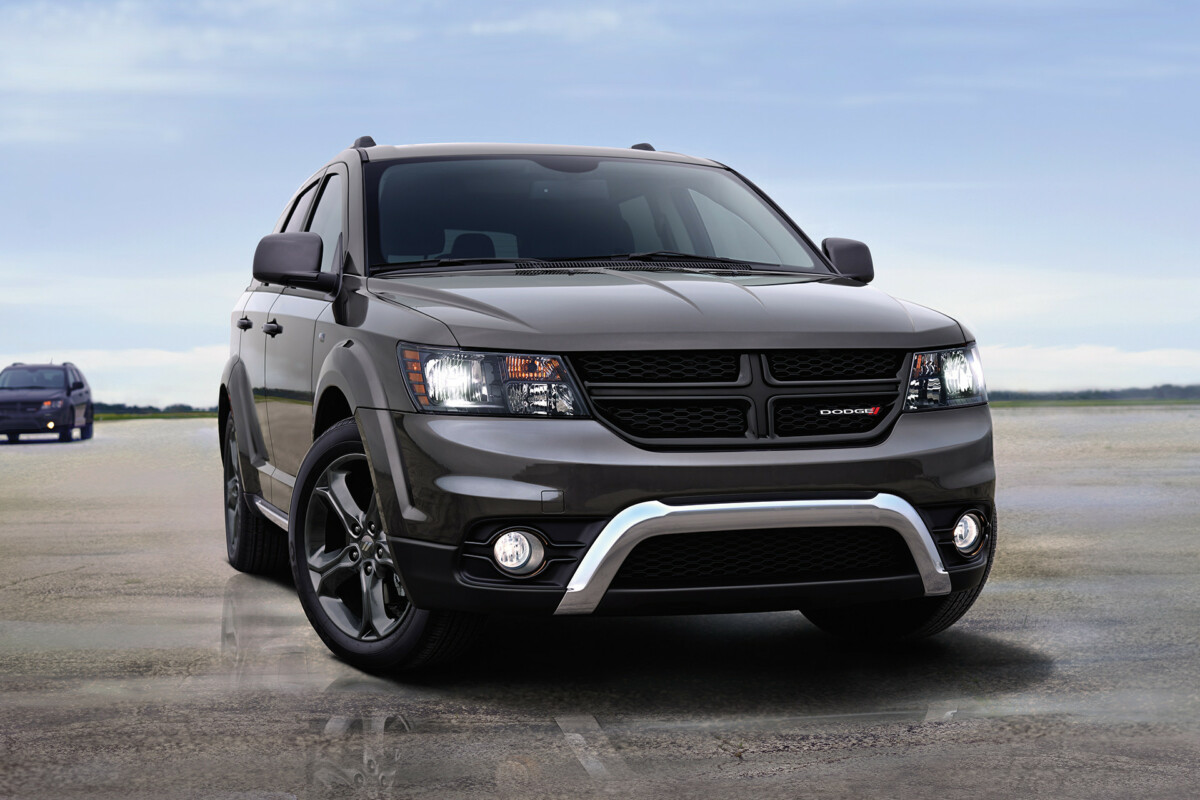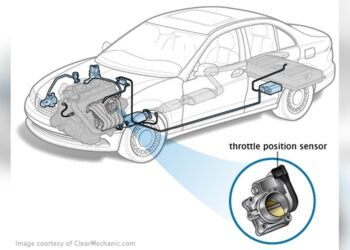If you’re considering a Dodge Journey for your next vehicle, you’re probably looking for a reliable and affordable SUV to fit your lifestyle. But here’s the thing—while the Dodge Journey has its perks, not all model years are created equal.
Some years come with hidden headaches that could cost you time, money, and peace of mind. Wouldn’t it be better to know which ones to steer clear of before making your decision? In this guide, we’ll walk you through the Dodge Journey years to avoid and explain exactly why they might not be the best choice for you.
By the end, you’ll feel confident knowing what to look for—and what to skip—so you can make a smarter, stress-free purchase. Ready to protect your wallet and your sanity? Let’s dive in.
Common Issues In Dodge Journey Models
The Dodge Journey has been a popular choice for families due to its spacious interior and affordable price tag. However, not all model years have lived up to expectations. If you’re considering buying a used Dodge Journey, it’s crucial to know the common issues associated with specific models to avoid costly repairs down the road.
Engine Performance Problems
The Dodge Journey has a history of engine-related complaints, particularly in older models. Drivers often report issues like stalling, poor acceleration, or unexpected shutdowns while on the road. For example, some models with the 2.4L engine are notorious for excessive oil consumption, which can lead to engine failure if not monitored closely.
Regular maintenance might mitigate some of these issues, but they can still be a headache. Have you checked whether the model you’re considering has had engine recalls or service bulletins? Researching this upfront could save you from an expensive mistake.
Transmission Failures
Many Dodge Journey owners have faced transmission problems, especially in models from the early 2010s. Symptoms include harsh shifting, transmission slipping, and in some cases, complete failure. The six-speed automatic transmission is particularly prone to these problems.
Replacing a transmission can cost thousands of dollars, making this a dealbreaker for many buyers. Before purchasing, test drive the vehicle and pay close attention to how it shifts gears. If it feels jerky or sluggish, it might be a sign to walk away.
Electrical System Malfunctions
Electrical problems are another common complaint among Dodge Journey owners. These include issues like failing power windows, malfunctioning door locks, and problems with the infotainment system. In some cases, the vehicle’s battery drains unexpectedly, leaving owners stranded.
One owner shared their frustration when their dashboard lights flickered and the car refused to start during a road trip. Imagine the inconvenience! If you’re considering a Journey, ask the seller about past electrical repairs to gauge how reliable the system might be.
Suspension And Brake Concerns
The suspension and braking systems in certain Dodge Journey models have also raised red flags. Premature wear on brake pads and rotors is a frequent issue, requiring replacements sooner than expected. Suspension problems, like worn-out struts or control arms, can lead to a bumpy and uncomfortable ride.
Ignoring these issues could compromise your safety. Inspect the suspension and brakes during your test drive. Does the car make unusual noises over bumps, or does the steering feel loose? If so, it might not be worth the risk.
By being informed about these common issues, you can make a smarter buying decision. Would you rather spend a bit more time researching now or deal with costly repairs later? The choice is yours.

Credit: drivecanvas.com
Worst Years For Dodge Journey
The Dodge Journey gained attention for its spacious interior and affordable price. But some years of this model faced reliability concerns and costly repairs. Identifying these problematic years helps buyers avoid potential headaches.
Key Models With Frequent Complaints
The 2009 Dodge Journey stands out for its frequent reliability issues. Owners reported problems with brakes wearing out prematurely and electrical malfunctions. Transmission failures were also common, leading to expensive fixes.
The 2014 model also faced criticism due to recurring complaints about engine reliability. Many drivers experienced sudden engine shutdowns and poor fuel efficiency. These issues made this year less desirable for buyers.
Years Known For Costly Repairs
2009 and 2010 were years notorious for high repair costs. Transmission replacements were frequent and expensive during these years. Electrical system failures added to the repair burden for owners. The 2012 model also had costly suspension repairs, frustrating many drivers.
2015 brought complaints about engine overheating and cooling system failures. Repairing these issues often required significant investment, making ownership less appealing.
Owner Reports On Reliability Issues
Many 2009 Dodge Journey owners reported brake problems as a major concern. Premature brake pad wear caused frustration and repeated trips to the mechanic. Electrical system glitches were also a recurring issue, impacting overall reliability.
Owners of 2013 models often mentioned transmission failures and rough gear shifts. These problems reduced driving comfort and increased repair bills. Reports from 2015 owners highlighted engine overheating, leading to frequent breakdowns.
The 2014 Dodge Journey had widespread complaints about sudden engine shutdowns. This raised concerns about safety and left many drivers stranded unexpectedly.
Signs Of A Problematic Dodge Journey
The Dodge Journey is a popular SUV, but not every model year lives up to its reputation. If you’re considering buying one, it’s crucial to recognize the signs of a problematic Dodge Journey. Identifying these early can save you from costly repairs and constant frustration down the road.
Warning Lights On The Dashboard
Pay attention to the dashboard lights. Frequent and unexplained warning lights, like the check engine or ABS light, can indicate deeper issues. While a single light might suggest a minor problem, repeated occurrences often signal chronic electrical or mechanical problems.
One common complaint about certain Journey models is the persistent check engine light caused by transmission or sensor failures. Have you noticed this when test driving? If so, it’s a red flag that warrants a professional inspection before buying.
Unusual Noises During Driving
Strange noises are more than an annoyance—they’re often the first sign of trouble. Clicking sounds when turning could mean CV joint issues. Whining or grinding noises may point to transmission or brake problems.
I remember test-driving a used Journey where a loud clunking sound happened every time I hit a bump. It turned out to be a suspension issue, which isn’t uncommon in older models. Always trust your ears and ask questions about any suspicious sounds.
Recurring Repair Needs
Some Dodge Journey owners report constant trips to the mechanic for the same issues, like failing alternators, weak batteries, or faulty air conditioning systems. Does the vehicle’s maintenance history show repeated repairs for the same part? That’s a sign of poor reliability.
One buyer shared that their 2012 Journey had ongoing transmission problems that weren’t fully resolved even after multiple repairs. A pattern like this can drain your wallet and patience. Always review repair records thoroughly before making a decision.
Are you noticing any of these signs in the Journey you’re considering? If so, take it as a cue to dig deeper or explore other options. Your time and money are better spent on a vehicle that doesn’t keep you guessing.

Credit: motoraxle.com
Tips For Choosing A Reliable Model
Finding a reliable Dodge Journey can feel overwhelming without the right guidance. Some model years have known issues, while others offer better reliability. Knowing what to check ensures you make a smart purchase. Below, we break down key tips for selecting a dependable Dodge Journey.
Best Model Years To Consider
Some Dodge Journey years are better built than others. Models from 2011, 2015, and 2018 are often praised for reliability. These years have fewer complaints about engine and transmission issues. They also come with improved safety and tech features. Avoid older models unless they have excellent maintenance records.
Features To Look For In Used Models
Safety features should be a top priority. Look for models with anti-lock brakes and multiple airbags. Stability control and rearview cameras add extra security. Comfort features like spacious interiors and user-friendly infotainment systems matter too. Check for smooth air conditioning and functional touchscreens.
Importance Of Vehicle History Reports
Always request a vehicle history report before buying. These reports reveal past accidents, repairs, and ownership details. Avoid cars with a history of frequent breakdowns. Look for consistent maintenance records showing regular oil changes and inspections. A clean history often means a more reliable vehicle.
Maintenance Strategies For Longevity
Keeping your Dodge Journey running smoothly requires proactive care. By adopting smart maintenance practices, you can extend its lifespan and avoid common issues. Regular servicing, prompt repairs, and thoughtful upgrades can make a significant difference.
Regular Service Intervals
Stick to the recommended service schedule provided in the owner’s manual. Routine oil changes, brake inspections, and tire rotations prevent wear and tear. Clean engine filters regularly to maintain optimal performance. Ensure fluids like coolant and transmission oil are checked often.
Addressing Issues Early
Don’t ignore warning signs like strange noises or dashboard lights. Small problems can escalate if left unattended. Fixing minor leaks or replacing worn parts early saves costly repairs later. Stay vigilant to catch issues before they worsen.
Upgrades To Improve Reliability
Consider upgrading older components to enhance durability. Replace factory-made spark plugs with high-quality ones for better ignition. Install modern brake pads for improved safety. Opt for durable tires designed for tough road conditions.

Credit: www.miloschusedcars.com
Frequently Asked Questions
What Are The Worst Dodge Journey Years To Avoid?
2011 and 2009 are considered problematic due to engine and transmission issues. These years reported frequent reliability concerns.
Why Is The 2011 Dodge Journey Considered Unreliable?
The 2011 model had frequent complaints about engine failure, electrical problems, and poor transmission performance. It impacted overall reliability.
Are Dodge Journey Models After 2015 More Reliable?
Yes, models after 2015 showed fewer major issues. Improved features and better quality control enhanced reliability.
What Common Problems Do Dodge Journey Owners Face?
Owners often report transmission issues, engine problems, and electrical malfunctions in certain model years.
How Can I Check If A Dodge Journey Has Recalls?
Search the vehicle identification number (VIN) on the NHTSA website. It lists all recalls for the car.
Conclusion
Choosing the right Dodge Journey model is crucial for a hassle-free experience. Avoiding problematic years can save you time, money, and frustration. Research thoroughly and focus on models with better reliability and reviews. Paying attention to common issues reported by owners helps make smarter decisions.
Always check maintenance history and consider a trusted mechanic’s advice. A well-informed choice ensures better performance and fewer repairs. Stay cautious, and you’ll enjoy a safer and smoother ride. Remember, preparation today prevents regrets tomorrow.
















